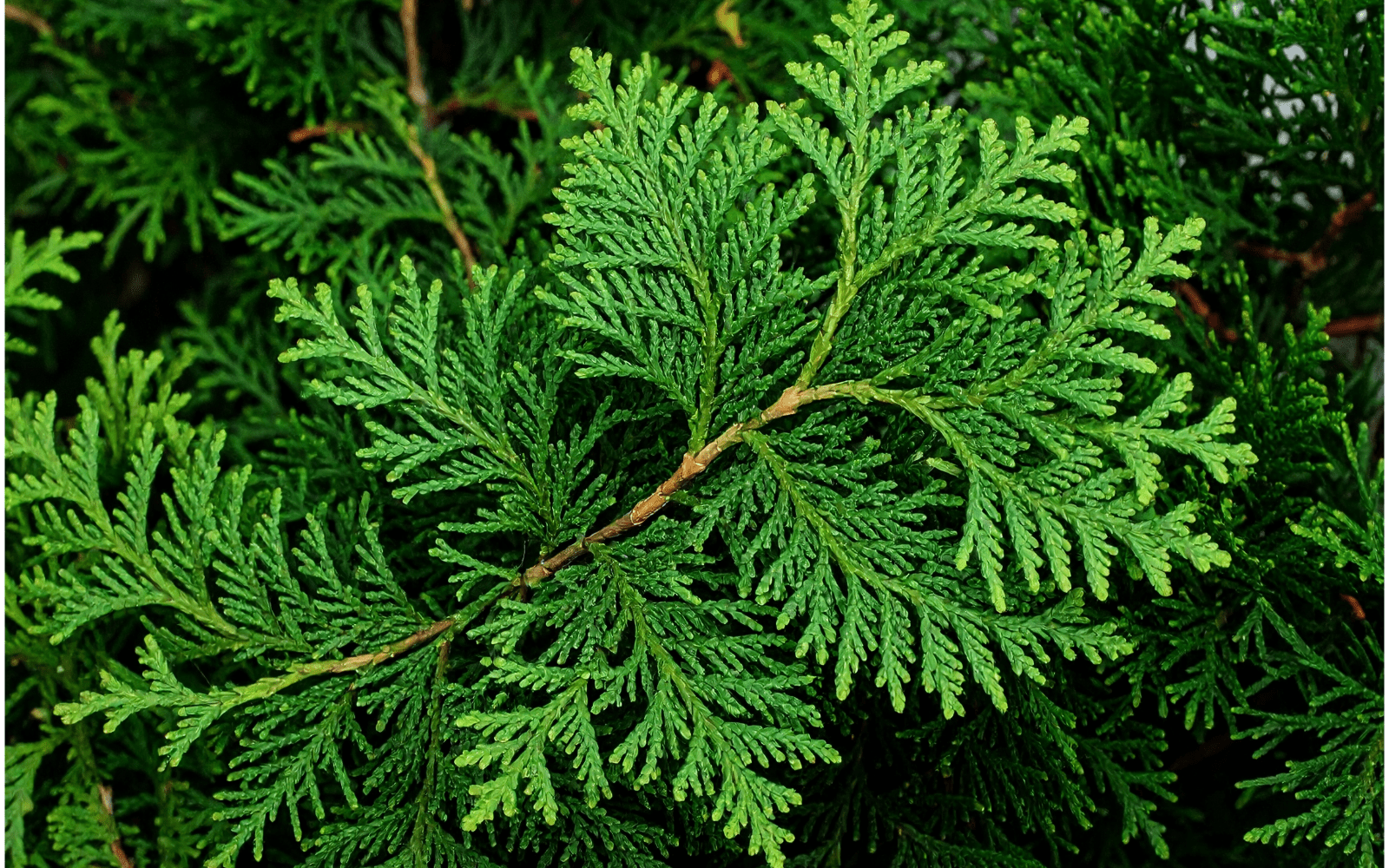
Eastern White Cedar (Thuja Occidentalis): The Boreal Tree of Life - A Complete Guide to Its Virtues and Uses
Introduction: Journey into the Heart of the Boreal Forest with Cedar
Picture the vast, quiet expanses of the North, where nature reigns supreme. It's in this majestic setting that the Eastern White Cedar thrives – a discreet but incredibly rich conifer. Often simply called "cedar" in many parts of Canada, or "Arborvitae," this iconic tree of North American forests is far more than just part of the landscape.
It's a reservoir of aromatic and medicinal benefits, a legacy passed down through ages. At Floèm, our passion for boreal flora drives us to explore and share the secrets of this fascinating tree. Join us on a journey to discover the Eastern White Cedar.
Cedar: Profile of a Unique Conifer
What Exactly is Eastern White Cedar?
Eastern White Cedar (Thuja occidentalis) belongs to the Cupressaceae family, just like cypresses and junipers. It's easily recognizable by its elegant pyramidal shape and its evergreen foliage – vibrant green, scale-like leaves pressed tightly against the branchlets. It embodies resilience against harsh climates. Although commonly called cedar, it's not a "true cedar" of the genus Cedrus found in the Mediterranean and Himalayas.
What Does Cedar Smell and Taste Like?
Lean in and breathe deep: cedar exudes a fresh, camphoraceous, and resinous scent – a true breath of forest air. This highly fragrant plant releases resinous aromas quite distinct from fir or spruce. Its taste is quite strong with hints of citrus.
What is the Story Behind 'Arborvitae' or 'Tree of Life'? Exploring Cedar's Fascinating History
Native to eastern North America (from southeastern Canada to the northeastern United States), cedar is deeply woven into the continent's history. First Nations peoples revered it, often calling it the "Tree of Life" (Arborvitae) or "Nookomis Giizhik" (Grandmother Cedar in Ojibwe).
They used its lightweight, rot-resistant wood to build canoes, longhouses, posts, and tools. Its leaves and bark were invaluable remedies:
-
Used in infusions or decoctions to relieve coughs, headaches, and even scurvy. Its high Vitamin C content is credited with possibly saving Jacques Cartier's crew during the winter of 1535–1536.
-
Utilized in steam baths for purification rituals.
-
Applied to burns, to reduce swelling, or soothe rheumatic pain.
Introduced to Europe in the 16th century (around 1540), it was quickly appreciated for its ornamental and medicinal qualities.
Eastern White Cedar: Botanical Classification, Names, and Origins
The scientific name of the cedar we are discussing is Thuja occidentalis.
"Thuja" comes from the Greek word thuos, meaning "fragrant tree." "Occidentalis" refers to its Western (North American) origin.
Commonly known as Eastern White Cedar due to its light-coloured wood, it's also widely called Arborvitae ("Tree of Life") because of its many traditional medicinal uses.
Discovering Cedar in its Natural Habitat
What Does Eastern White Cedar Look Like?
This conifer typically reaches 15 to 20 meters in height, with a trunk diameter of up to 40–90 cm, sometimes larger in ideal conditions. Its dense foliage, made of green scales (darker on top, yellowish-green underneath), forms characteristic flat sprays. The small cones (8–12 mm) start yellow-green and turn brown at maturity. Its bark is thin and reddish-brown on young trees, becoming fibrous and furrowed with age.
Where Does Wild Eastern White Cedar Grow?
Cedar prefers moist, swampy environments or well-drained limestone soils, often found along lake shores or in low-lying areas where it can form pure stands called "cedar swamps." It also grows alongside other conifers (like Black Spruce, Balsam Fir) or hardwoods (White Pine, Yellow Birch) depending on the soil type across its Canadian range.
Cedar Today: Multiple Benefits and Uses
What are the Recognized Properties of Cedar?
Eastern White Cedar is a natural pharmacy and wellness ally. Rich in active compounds (tannins, flavonoids, essential oil containing thujone), it possesses several properties:
-
Antiseptic, antiviral, antifungal: Useful against various infections.
-
Anti-inflammatory: Helps soothe pain and inflammation.
-
Antioxidant: Fights oxidative stress.
-
Expectorant and mucolytic: Helps clear airways.
-
Diuretic: Promotes kidney function and elimination.
-
Immunostimulant: Supports natural defenses.
What are the Health Benefits of Eastern White Cedar?
-
For Skin: Traditionally used (often externally) for warts, eczema, psoriasis, fungal infections (athlete's foot, nail fungus), and to aid healing. Its essential oil is sometimes used for acne.
-
For Hair: Some traditions credit it with stimulating hair growth and treating scalp issues (dandruff).
-
For Immunity and Respiratory Health: Used cautiously as an infusion or tincture for colds, coughs, bronchitis, and sinusitis due to its expectorant effects. Its essential oil, diffused, can purify the air.
-
For the Urinary System: Its diuretic properties may be helpful for cystitis or water retention.
-
For Pain: Traditionally used against rheumatism and arthritis, often applied locally (tincture, diluted oil).
-
For Mental Well-being: In aromatherapy, the essential oil is known for its calming effect, helping to ease anxiety and improve focus. It's also used for energetic space clearing.
Harvesting Cedar: Know-How and Respect for Nature
Where and When Should You Harvest Cedar?
Cedar can be harvested from its natural habitat (forests, wetlands) or cultivated sources. Spring and summer, during active growth, are ideal times to gather the young, leafy branch tips, which are more tender and aromatic.
What Part of the Cedar Do You Harvest and How?
Primarily, the young, scale-like leaves and the ends of the branchlets are used.
-
Tools: Harvesting can be done by hand or with clean pruning shears for a neat cut.
-
Quantity and Sustainability: Harvesting must be respectful to avoid harming the tree. Never take more than 10–20% of the foliage from a single tree. Avoid cutting or stripping large sections of bark. Some Indigenous communities have specific protocols, like harvesting bark only from trees of a certain size, in narrow vertical strips, and only once in the tree's life. Prioritize lower branches or those fallen after storms when possible.
-
Factors Influencing Quality: Quality depends on growing conditions (soil, climate), absence of pollutants, harvest season, and drying/storage methods.
Processing and Preserving Cedar: Secrets to Optimal Drying and Long-Term Storage
Once your precious cedar boughs are gathered with care and respect, the crucial step of processing begins, primarily through drying.
This stage is essential to preserve its aromas and properties for long-term storage. Proper drying and storage ensure you can enjoy cedar's benefits for months.
How to Dry Cedar: Key Methods and Tips
The goal of drying is to remove moisture to prevent mould growth while preserving the volatile compounds (essential oils) responsible for its scent and virtues.
-
Preparation:
-
Inspect branches: remove damaged, yellowed, or infested parts.
-
Gently shake to remove debris or small insects.
-
Washing isn't recommended; harvest from a clean, remote area. Tip: Harvest the day after rain, once plants have dried naturally.
-
Method 1: Air Drying (Most Common)
-
Layout: Spread cedar sprigs in a single thin layer on a clean, dry surface like a stainless steel mesh screen (avoid window screens with heavy metals), tray, or clean cloth (change if it gets damp). Avoid overlapping, which slows drying and increases mould risk.
-
Location: Choose a dry, warm, well-ventilated spot, crucially out of direct sunlight. Sunlight degrades essential oils and can fade the foliage. A dry attic, a spare room with airflow, or even an airy cupboard works well.
-
Air Circulation: Good ventilation is vital. A small fan on low speed can help if the air is stagnant (don't point it directly at the plants).
-
Turning: Gently turn or shuffle the sprigs every day or two for even drying.
-
The Dry Test: Cedar is dry when the small scale-like leaves are brittle and detach easily, and the small stems snap cleanly when bent (they shouldn't be pliable). This can take a few days to one or two weeks, depending on humidity and temperature.
Tip: Drying is much faster after several sunny days when the air is less humid.
Method 2: Drying in Hanging Bundles
-
Form small, loose bundles of cedar sprigs.
-
Tie them at the base with string, not too tightly, allowing air circulation.
-
Hang them upside down in the same type of location (dry, airy, dark).
Method 3: Using a Dehydrator (With Caution)
-
Set your food dehydrator to the lowest temperature (usually 35°C–40°C / 95°F–105°F). High heat destroys essential oils.
-
Arrange sprigs in a single layer. Drying will be faster (a few hours); monitor closely.
How to Store Dried Cedar: Preserving Freshness
Once perfectly dry (moisture above ~4% risks mould in sealed jars), storage is simple but needs care:
-
Ideal Container: Use airtight containers (glass jars like Mason jars are excellent). Tinted glass (amber, green) is best as it protects from light. If using clear glass, store the jar in a dark place. Airtight metal tins also work. Avoid plastic bags, which aren't always fully airtight.
-
Whole or Crumbled? It's best to store sprigs as whole as possible. They retain aromas and compounds better. Crumble just before use. If space is limited, cutting them into shorter sections is acceptable.
-
Storage Location: Keep containers in a cool, dry place away from direct light. A kitchen cupboard away from the stove, a closet in a cool room, or a dry cellar are good options.
-
Labeling: Clearly label each container with "Eastern White Cedar" and the harvest or jarring date. Use the oldest stock first.
How Long Can You Keep Dried Cedar?
Properly dried and stored, cedar can retain much of its aromatic and medicinal quality for 6 to 12 months.
-
Beyond a Year: It remains usable, but its aromatic potency and potentially its effects will gradually diminish as essential oils evaporate and oxidize. Depending on the container, it might retain flavour longer but lose some medicinal efficacy.
-
How to Check Freshness: Trust your senses. Good cedar should retain a relatively vibrant colour (not too brown or faded) and release its characteristic resinous scent when you lightly crush the leaves between your fingers. If the smell is weak, earthy, or absent, it's time to refresh your supply.
How to Use Cedar in Your Daily Life: A Practical Guide
This boreal treasure can be invited into your life in various ways. However, its potency demands respect and knowledge. Here’s how to use it wisely:
1. Cedar Tea (Infusion): Comforting Warmth & Targeted Benefits
Is Cedar Tea Good For You?
Cedar tea is one of the gentlest ways to enjoy its benefits, often used for respiratory support and relaxation. Infused leaves release woody, slightly bitter, citrusy notes.
How to Prepare:
-
Dosage: Use about 1 teaspoon (1-2 grams) of dried, slightly crumbled leafy sprigs per cup (approx. 250 ml).
-
Water: Pour simmering water (90-95°C – just off the boil) over the cedar. Water that's too hot can degrade delicate compounds.
-
Infusion: Cover your cup or pot while steeping (10-15 minutes) to retain volatile oils. Longer steeping may increase bitterness.
-
Strain: Filter well before drinking.
When to Drink: Ideal during colds, to soothe a mild cough, clear airways, or for a calming moment evoking a forest walk.
Caution: Due to thujone, cedar tea is generally recommended for occasional, short-term use. Avoid prolonged daily consumption without consulting a healthcare professional.
FUNDAMENTAL WARNING: NEVER use Cedar essential oil internally or for cooking. It is far too concentrated and toxic if ingested.
2. Cedar Essential Oil: Concentrated Power for External Use & Ambiance
How Can You Use Cedar Essential Oil?
Obtained by steam distillation, cedar essential oil is extremely potent. Its use requires specific precautions and is strictly for external or atmospheric diffusion.
Atmospheric Diffusion:
-
Purpose: Purify air (antiseptic), create a grounding, woody atmosphere for focus or meditation, repel insects (like closet moths).
-
How: Add only a few drops (3-5) to a suitable diffuser.
-
Duration: Diffuse for short periods (15-20 minutes), 1-3 times a day max. Avoid continuous diffusion, especially in enclosed spaces or around sensitive individuals (children, asthmatics).
Topical Application (On Skin):
-
DILUTION IS MANDATORY: Cedar oil can irritate or burn skin (dermocaustic) if used neat. ALWAYS dilute it in a carrier oil (jojoba, almond, apricot kernel) before skin application.
-
Concentration: Aim for a maximum 1-2% dilution for larger areas (e.g., muscle rub) – roughly 1-2 drops essential oil per 1 tsp (5 ml) carrier oil. For very localized use (e.g., wart), a professional might suggest higher dilution or neat application strictly on the wart, but never do this without qualified medical advice.
-
Potential Uses (Under Guidance): Muscle/joint aches (massage with diluted oil), specific skin issues like warts or fungal infections (very localized application after consulting a professional).
-
Patch Test: Always do a skin patch test before first use (apply diluted oil to inner elbow, wait 24-48h for reaction).
-
Precautions: Avoid eyes, mucous membranes, open wounds. Wash hands thoroughly after use.
3. Cedar Tincture: Therapeutic Use Under Guidance
A tincture is an alcohol-water extract of fresh sprigs. It's a concentrated form used mainly in phytotherapy or homeopathy (in diluted, potentized forms).
Indications:
Generally reserved for specific therapeutic purposes (immune support, respiratory issues, wart treatment internally/externally per protocols) at precise dosages.
PROFESSIONAL GUIDANCE IS ESSENTIAL:
Do not self-medicate with cedar tincture. Consult a qualified healthcare professional (doctor, pharmacist, naturopath, herbalist) to determine suitability, dosage, and duration.
4. Cedar in the Kitchen: A Refreshing Forest Touch (Use with Extreme Caution)
Can You Eat Eastern White Cedar?
Using cedar in cooking requires significant experience and extreme caution due to its potent effects (thujone). Unlike common herbs like thyme or rosemary, it's not an ingredient for spontaneous or large-quantity use. Use is typically in very small amounts.
Whole leaves might be used to briefly infuse dishes like soups for a woody, slightly resinous flavour (and then removed), or tiny amounts of powdered dried leaves could be added very sparingly to bread or biscuit dough. Its distinctive taste can easily overpower. Thorough knowledge is essential to avoid risk.
Exploring Cedar Flavours in Cooking: Ideas for Culinary Adventurers (Proceed with Caution!)
Using cedar in food demands respect, knowledge, and moderation.
Its powerful resinous, slightly camphoraceous profile can add a unique forest note, but dosage must be minimal due to thujone.
These are exploratory ideas, not standard recipes.
CRITICAL REMINDER:
NEVER INGEST CEDAR ESSENTIAL OIL.
1. Subtle Boreal Marinade (for Game or Robust Red Meats)
Goal: A hint of forest flavour. Good for strong-tasting meats (venison, moose, lamb, braised beef).
Ingredients (for ~500g meat):
-
60 ml olive oil
-
1–2 crushed garlic cloves
-
4–5 lightly crushed juniper berries
-
Black pepper
-
CRITICAL: Cedar – Start with no more than ½ tsp finely chopped dried leaves OR one tiny sprig (2–3 cm) to infuse & remove later.
-
(Optional) Rosemary sprig or balsam fir needles (if certain of ID)
Preparation:
-
Mix marinade ingredients.
-
Coat meat thoroughly.
-
Refrigerate 2–6 hours (or overnight for braising).
Important:
Remove whole sprig before cooking.
If finely chopped leaves are used, they can remain, but use extreme caution — the goal is flavour infusion, not eating the pieces.
Cook as desired.
2. Aromatic Forest Syrup (for Delicate Finishing Touches)
Use: Sparingly (drops) for complex aroma in drinks/desserts.
Ingredients:
-
250 ml water
-
CRITICAL: Cedar – Start with 1 level tsp dried leaves (~1 g)
-
125 g cane sugar (or maple syrup, adjust liquid)
Preparation:
-
Bring water to a simmer, remove from heat.
-
Add cedar, cover, infuse only 5–7 minutes (shorter than tea to avoid bitterness).
-
Strain meticulously.
-
Add sugar to strained infusion, heat gently until dissolved.
-
Simmer very gently 10–15 minutes until slightly thickened.
-
Cool completely and bottle airtight.
Usage (Sparingly!):
-
A dash in gin & tonic or vodka cocktail
-
Tiny drizzle on fruit salad (pear, apple)
-
Flavour vanilla ice cream or yogurt
-
Add an aromatic note to a winter salad vinaigrette
Storage: Refrigerate for a few weeks.
Warning:
These ideas are for informed culinary exploration.
Cedar is potent. Start with minuscule amounts.
If in doubt, do not use it. Safety first.
Safety Precautions: What to Know Before Using Cedar
Is Eastern White Cedar Safe to Use? Key Warnings About Thujone
Cedar contains thujone, a ketone that can be neurotoxic at high doses or with prolonged use, potentially causing nervous system issues (convulsions), liver, and kidney problems.
Key Points:
-
Respect Dosages: Never exceed recommended amounts, especially for essential oil. Essential oil ingestion is toxic and must be avoided.
-
Occasional Use: Infusions are generally considered for short-term, occasional use.
-
Consult a Professional: Before any medicinal use, especially internal, seek advice from a qualified doctor, pharmacist, or herbalist.
Who Should Avoid Cedar? (Contraindications)
-
Pregnant and breastfeeding women: Strictly contraindicated (risk of miscarriage, passes into milk).
-
Children: Avoid due to thujone, especially children under 5 whose systems are developing.
-
Individuals with liver, kidney, or neurological disorders (e.g., epilepsy): Contraindicated.
-
Individuals with autoimmune diseases: May overstimulate the immune system.
Choosing Quality, Sustainable Cedar
How to Choose Quality Cedar Products?
-
Prioritize products from organic farming or responsible, sustainable wild-harvesting.
-
Check the origin and ensure no chemical treatments were used.
-
For essential oil, look for complete steam distillation, certified organic, and preferably sourced locally.
Why Choose Environmentally Respectful Cedar and Where to Find It?
Eastern White Cedar plays a vital ecological role in Canada.
Overharvesting or unsustainable practices can harm forest ecosystems and threaten its long-term survival.
Choosing respectful products supports the preservation of biodiversity and the continuity of traditional knowledge.
At Floèm, we are committed to offering products based on cedar and other boreal treasures harvested with the utmost respect for nature and ancestral practices.
Conclusion: Cedar, a Precious Ally from the Boreal Forest
Conclusion: Cedar, a Precious Ally from the Boreal Forest
Eastern White Cedar, or Arborvitae, is much more than just a tree.
It is a living heritage, carrying a rich history and offering multiple benefits.
Used wisely and respectfully, it can be a precious ally for our physical health, well-being, and connection to the natural world around us.
Its varied uses — from soothing tea to targeted skin applications, and its captivating aroma in aromatherapy — make it a truly remarkable natural resource.
However, we must never forget the importance of caution due to its potency and the necessity of choosing sustainable, high-quality sources.
Were you fascinated by the secrets of cedar ?
This is just a glimpse into the treasures held by our boreal flora!
Continue your journey into the heart of nature by exploring our blog — discover comprehensive guides, wellness tips, and captivating stories about the incredible plants that surround us.
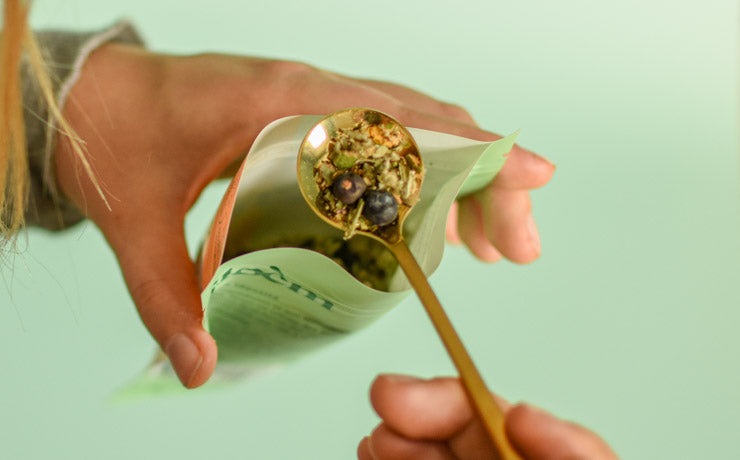

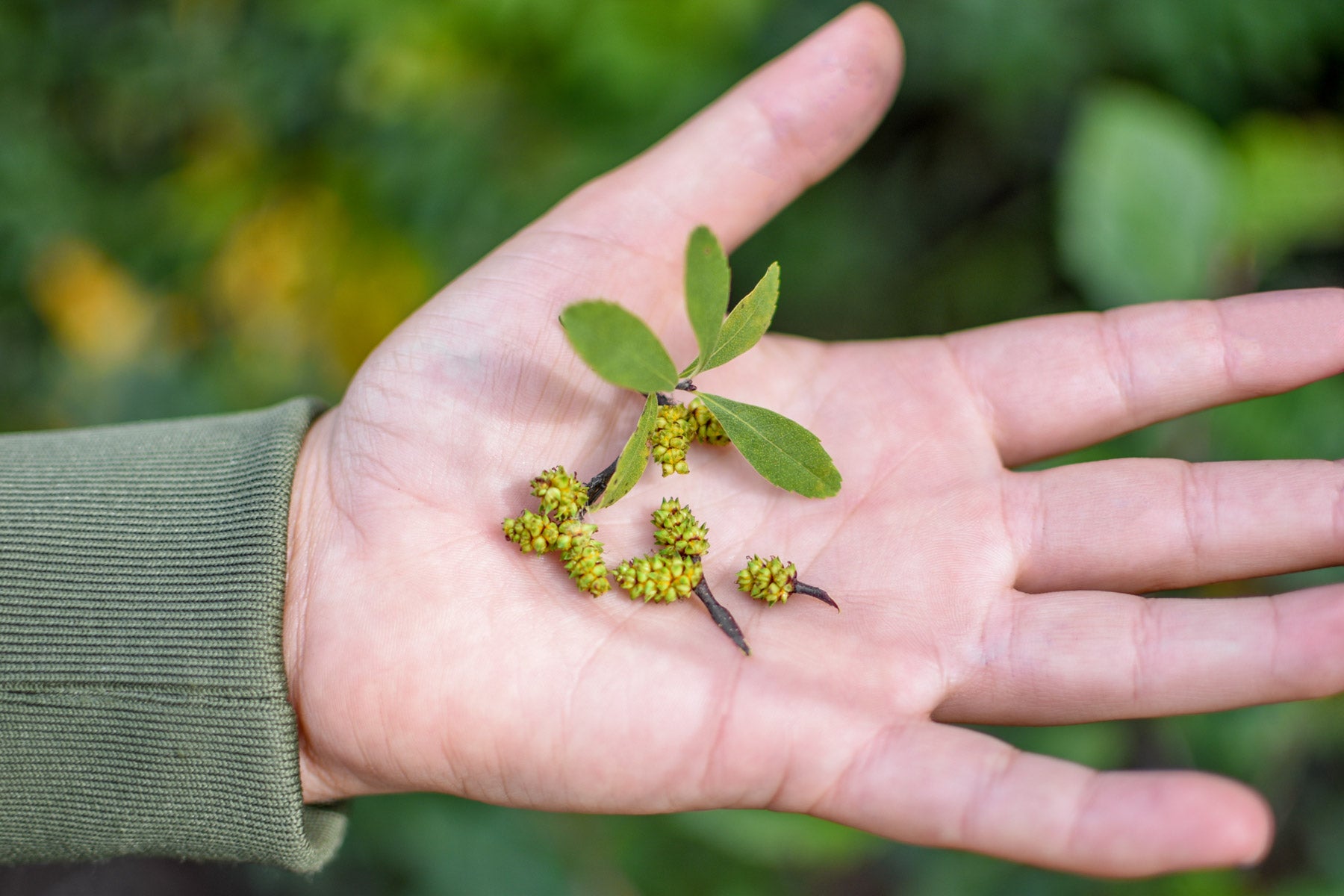

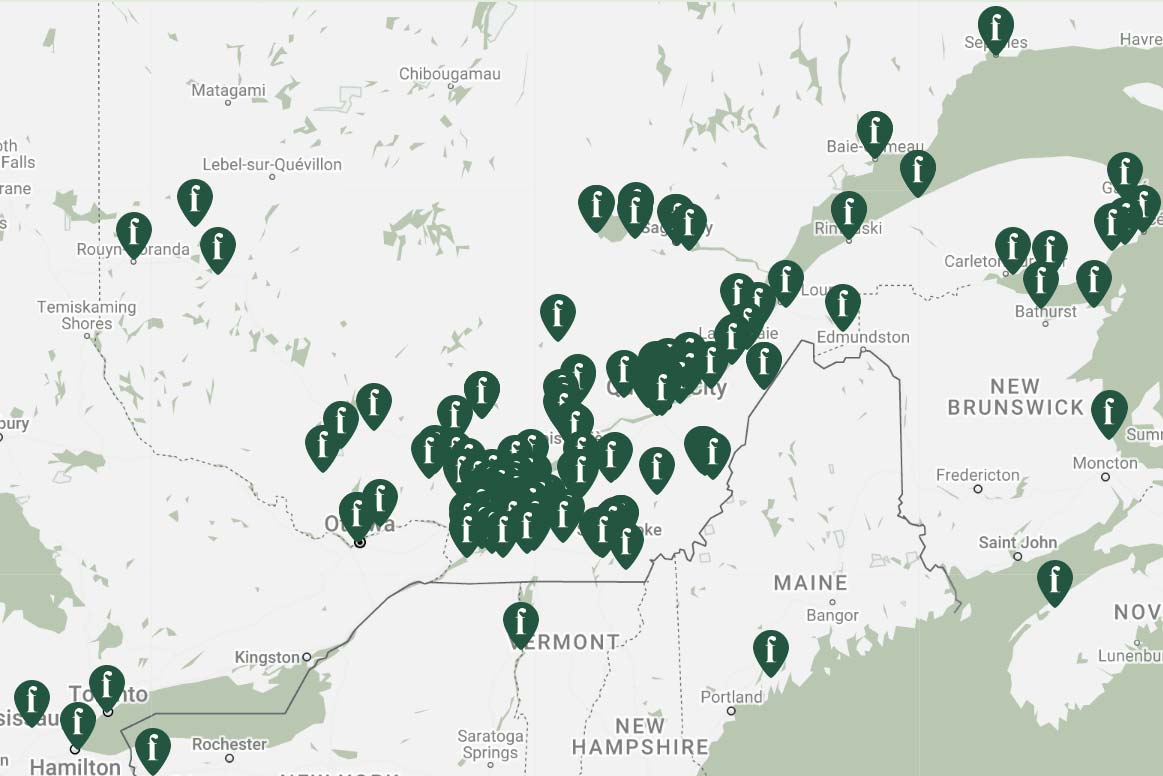









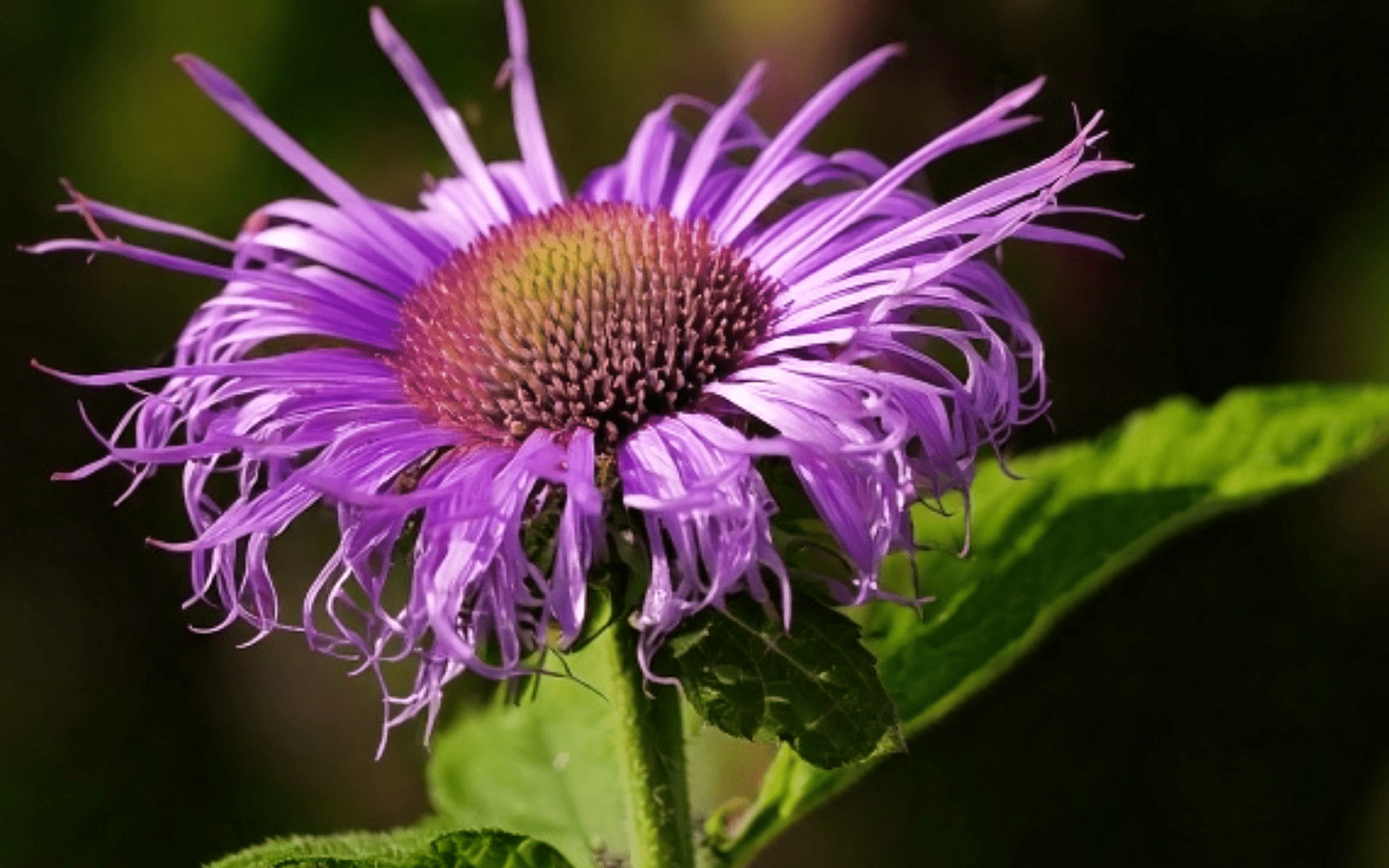


Leave a comment
This site is protected by hCaptcha and the hCaptcha Privacy Policy and Terms of Service apply.